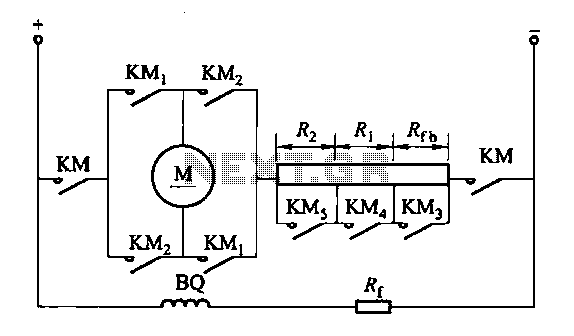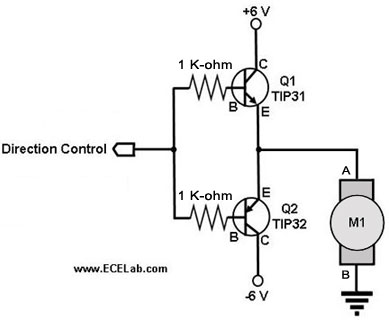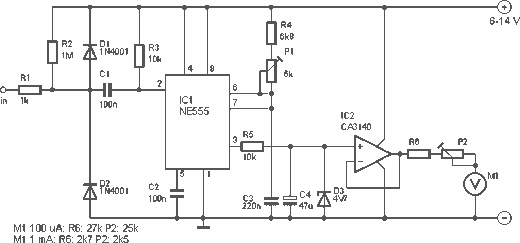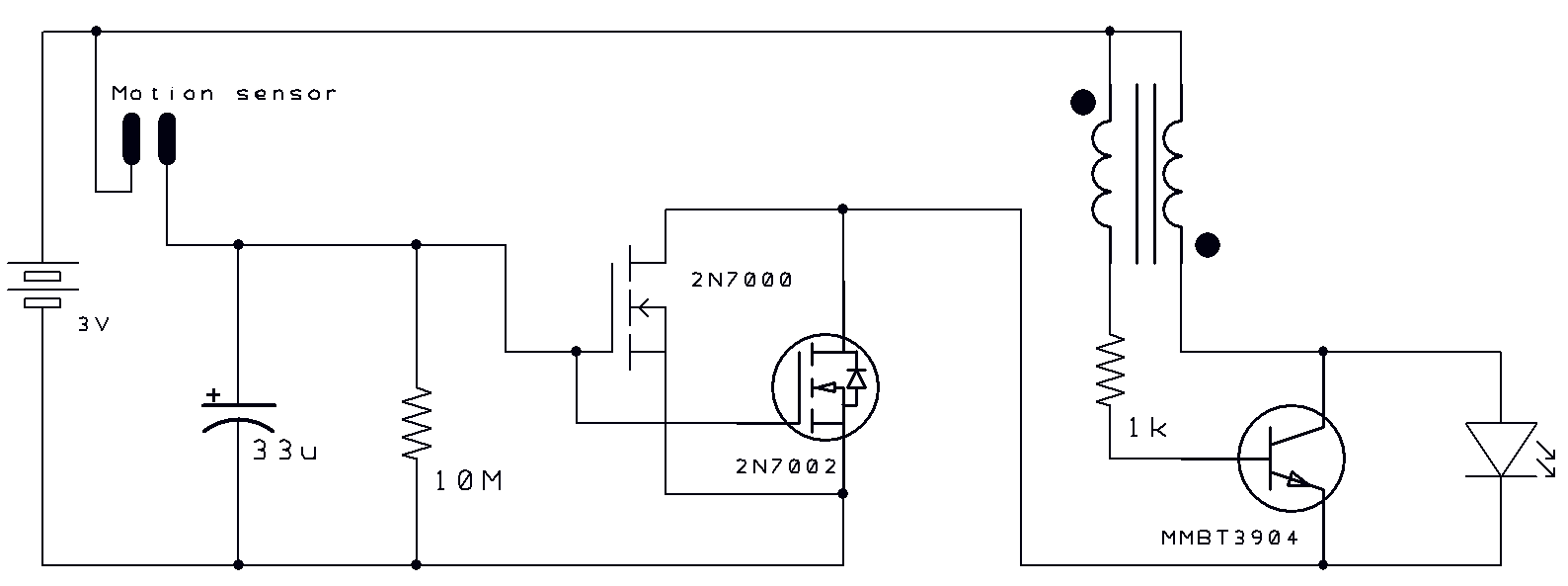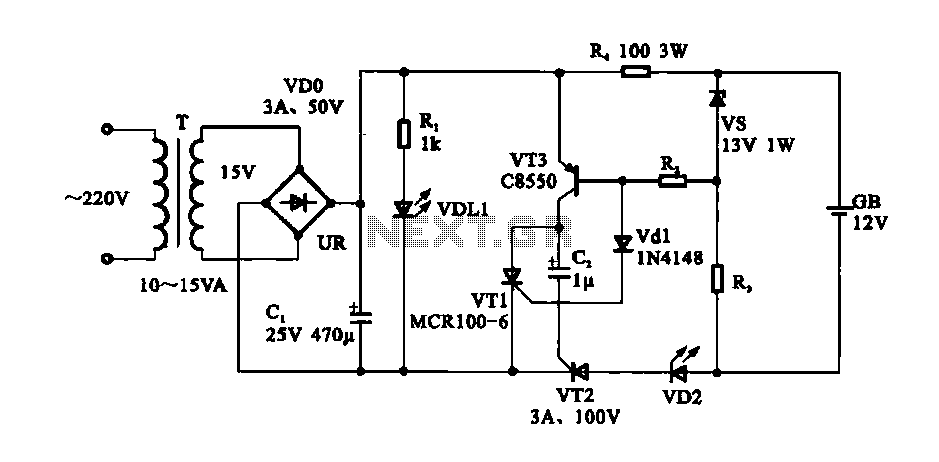
Amplifier circuit
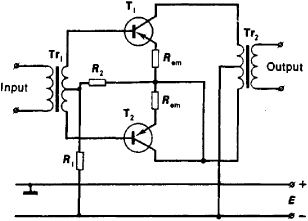
An amplifier is a device that accepts a varying input signal and produces an output signal that varies in the same way as the input but has a larger amplitude. The input signal may be a current, voltage, mechanical motion, or any other signal, while the output signal is typically of the same nature. The most common types of amplifiers are electronic and utilize transistors as their principal components. A transistor is a three-terminal, solid-state electronic device used for amplification and switching, effectively replacing the electron tube in most applications. Electronic amplifiers are found in radio and television transmitters and receivers, audio and stereo systems, intercoms, and various consumer electronics. In their simplest form, amplifiers are built around a single transistor. One example is the common-emitter circuit, where a varying input voltage is applied to the base of the transistor, and the output appears at the collector. The ratio of the output voltage to the input voltage is referred to as voltage gain. However, a single transistor may not provide sufficient gain for many applications. In a cascade or multistage amplifier, the output of the first transistor is fed into the second transistor, and this process continues through several stages until adequate signal amplification is achieved. In devices like radio receivers, multiple amplifiers boost a weak input signal until it is strong enough to drive a speaker. Typically, multistage amplifiers are constructed as integrated circuits (ICs) built on a semiconductor substrate, usually single-crystal silicon. Another less common category of electronic amplifiers employs magnetic devices as their main components. Additionally, mechanical amplifiers exist, such as the power steering system in automobiles. Operational amplifiers are specialized amplifiers whose output voltage is proportional to the negative of their input voltage, providing a significant amplification of input signals. Amplifiers are utilized in radio and television receivers, high-fidelity audio equipment, and computers. While amplification can also be achieved through electromechanical devices and vacuum tubes, most modern electronic systems rely on solid-state microcircuits. Typically, the output of one amplifier is fed into a subsequent amplifier until the desired output level is reached. Amplifiers can enhance electrical and optical signals and are available in various classes, including Class D amplifiers and those using pulse-width modulation (PWM). They are capable of increasing the magnitude or power level of a physical quantity, such as electric current or hydraulic mechanical force, while preserving the wave shape of the input signal. This overview covers several fundamental electronic amplifiers.
An amplifier circuit typically consists of various components that work together to achieve the desired amplification. The basic configuration of a common-emitter amplifier includes a transistor, resistors, capacitors, and a power supply. The transistor serves as the core amplifying element, with the input signal applied to its base terminal. Resistors are used to set the biasing conditions of the transistor, ensuring it operates in the active region for linear amplification.
Capacitors may be included in the circuit to block DC components from the input signal while allowing AC signals to pass through, which is essential for audio applications. The output is taken from the collector terminal of the transistor and can be coupled to further stages or output devices, such as speakers or other amplifiers, depending on the application.
In multistage amplifiers, each stage is designed to provide a specific gain, and the overall gain is the product of the gains of individual stages. Careful selection of component values is crucial to ensure stability and prevent distortion in the output signal. Feedback mechanisms may also be implemented to enhance linearity and control the gain of the amplifier.
Integrated circuits (ICs) have revolutionized amplifier design by allowing multiple amplification stages to be housed within a single chip, reducing size and improving performance. Modern amplifiers can also incorporate digital signal processing (DSP) capabilities, enabling advanced features such as equalization and dynamic range compression.
In summary, amplifiers are essential components in a wide range of electronic systems, providing the necessary gain to ensure that signals are strong enough for further processing or output. Their design can vary significantly based on the application, but the fundamental principles of operation remain consistent across different types of amplifiers.amplifier, device that accepts a varying input signal and produces an output signal that varies in the same way as the input but has a larger amplitude. The input signal may be a current, a voltage, a mechanical motion, or any other signal; the output signal is usually of the same nature.
The most common types of amplifiers are electronic and have transistors transistor, three-terminal, solid-state electronic device used for amplification and switching. It is the solid-state analog to the triode electron tube; the transistor has replaced the electron tube for virtually all common applications.
. Click the link for more information. or electron tubes electron tube, device consisting of a sealed enclosure in which electrons flow between electrodes separated either by a vacuum (in a vacuum tube) or by an ionized gas at low pressure (in a gas tube). . Click the link for more information. as their principal components. Electronic amplifiers are used in radio and television transmitters and receivers, audio and stereo systems, intercoms, and other consumer electronics devices.
Amplifiers in their simplest form are built around a single transistor. In one type of single-transistor amplifier, known as a common-emitter circuit, a varying input voltage is fed to the base of the transistor, and the output appears at the transistor`s collector; the ratio of the output voltage to the input voltage is called the voltage gain. For many purposes a single transistor does not provide sufficient gain, or amplification. In a cascade, or multistage, amplifier, the output of the first amplifying device (transistor) is fed as input to the second amplifying device, whose output is fed as input to the third, and so on until an adequate signal amplification has been achieved.
In a device such as a radio receiver, several amplifiers boost a weak input signal until it is powerful enough to drive a speaker. Usually, multistage amplifiers are not made of discrete components, but are built as integrated circuits integrated circuit (IC), electronic circuit built on a semiconductor substrate, usually one of single-crystal silicon.
The circuit, often called a chip, is packaged in a hermetically sealed case or a nonhermetic plastic capsule, with leads extending from it for. Click the link for more information. . Another less common group of electronic amplifiers use magnetic devices as their principal components.
There are also many kinds of mechanical amplifiers, e. g. , the power steering system of an automobile. See operational amplifier operational amplifier, amplifier whose output voltage is proportional to the negative of its input voltage and that boosts the amplitude of an input signal many times, i. e. , has a very high gain. Device that responds to a small input signal (voltage, current, or power) and delivers a larger output signal with the same waveform features.
Amplifiers are used in radio and television receivers, high-fidelity audio equipment, and computers. Amplification can be provided by electromechanical devices (e. g. , transformers and generators ) and vacuum tubes, but most electronic systems now employ solid-state microcircuits. One amplifier is usually insufficient, so its output is fed into a second, whose output is fed to a third, and so on, until the output level is satisfactory.
A device that accepts a small signal and outputs a larger signal that generally matches the waveform characteristics of the input. Amplifiers are available to boost electrical and optical signals. See amplifier classes, Class D amplifier and PWM. A device capable of increasing the magnitude or power level of a physical quantity, such as an electric current or a hydraulic mechanical force, that is varying with time, without distorting the wave shape of the quantity.
A device capable of increasing the magnitude of a physical quantity. This article discusses a couple of basic electronic amplifiers 🔗 External reference
An amplifier circuit typically consists of various components that work together to achieve the desired amplification. The basic configuration of a common-emitter amplifier includes a transistor, resistors, capacitors, and a power supply. The transistor serves as the core amplifying element, with the input signal applied to its base terminal. Resistors are used to set the biasing conditions of the transistor, ensuring it operates in the active region for linear amplification.
Capacitors may be included in the circuit to block DC components from the input signal while allowing AC signals to pass through, which is essential for audio applications. The output is taken from the collector terminal of the transistor and can be coupled to further stages or output devices, such as speakers or other amplifiers, depending on the application.
In multistage amplifiers, each stage is designed to provide a specific gain, and the overall gain is the product of the gains of individual stages. Careful selection of component values is crucial to ensure stability and prevent distortion in the output signal. Feedback mechanisms may also be implemented to enhance linearity and control the gain of the amplifier.
Integrated circuits (ICs) have revolutionized amplifier design by allowing multiple amplification stages to be housed within a single chip, reducing size and improving performance. Modern amplifiers can also incorporate digital signal processing (DSP) capabilities, enabling advanced features such as equalization and dynamic range compression.
In summary, amplifiers are essential components in a wide range of electronic systems, providing the necessary gain to ensure that signals are strong enough for further processing or output. Their design can vary significantly based on the application, but the fundamental principles of operation remain consistent across different types of amplifiers.amplifier, device that accepts a varying input signal and produces an output signal that varies in the same way as the input but has a larger amplitude. The input signal may be a current, a voltage, a mechanical motion, or any other signal; the output signal is usually of the same nature.
The most common types of amplifiers are electronic and have transistors transistor, three-terminal, solid-state electronic device used for amplification and switching. It is the solid-state analog to the triode electron tube; the transistor has replaced the electron tube for virtually all common applications.
. Click the link for more information. or electron tubes electron tube, device consisting of a sealed enclosure in which electrons flow between electrodes separated either by a vacuum (in a vacuum tube) or by an ionized gas at low pressure (in a gas tube). . Click the link for more information. as their principal components. Electronic amplifiers are used in radio and television transmitters and receivers, audio and stereo systems, intercoms, and other consumer electronics devices.
Amplifiers in their simplest form are built around a single transistor. In one type of single-transistor amplifier, known as a common-emitter circuit, a varying input voltage is fed to the base of the transistor, and the output appears at the transistor`s collector; the ratio of the output voltage to the input voltage is called the voltage gain. For many purposes a single transistor does not provide sufficient gain, or amplification. In a cascade, or multistage, amplifier, the output of the first amplifying device (transistor) is fed as input to the second amplifying device, whose output is fed as input to the third, and so on until an adequate signal amplification has been achieved.
In a device such as a radio receiver, several amplifiers boost a weak input signal until it is powerful enough to drive a speaker. Usually, multistage amplifiers are not made of discrete components, but are built as integrated circuits integrated circuit (IC), electronic circuit built on a semiconductor substrate, usually one of single-crystal silicon.
The circuit, often called a chip, is packaged in a hermetically sealed case or a nonhermetic plastic capsule, with leads extending from it for. Click the link for more information. . Another less common group of electronic amplifiers use magnetic devices as their principal components.
There are also many kinds of mechanical amplifiers, e. g. , the power steering system of an automobile. See operational amplifier operational amplifier, amplifier whose output voltage is proportional to the negative of its input voltage and that boosts the amplitude of an input signal many times, i. e. , has a very high gain. Device that responds to a small input signal (voltage, current, or power) and delivers a larger output signal with the same waveform features.
Amplifiers are used in radio and television receivers, high-fidelity audio equipment, and computers. Amplification can be provided by electromechanical devices (e. g. , transformers and generators ) and vacuum tubes, but most electronic systems now employ solid-state microcircuits. One amplifier is usually insufficient, so its output is fed into a second, whose output is fed to a third, and so on, until the output level is satisfactory.
A device that accepts a small signal and outputs a larger signal that generally matches the waveform characteristics of the input. Amplifiers are available to boost electrical and optical signals. See amplifier classes, Class D amplifier and PWM. A device capable of increasing the magnitude or power level of a physical quantity, such as an electric current or a hydraulic mechanical force, that is varying with time, without distorting the wave shape of the quantity.
A device capable of increasing the magnitude of a physical quantity. This article discusses a couple of basic electronic amplifiers 🔗 External reference
